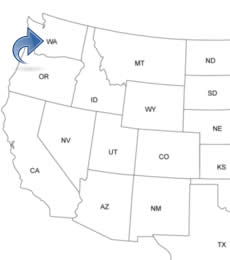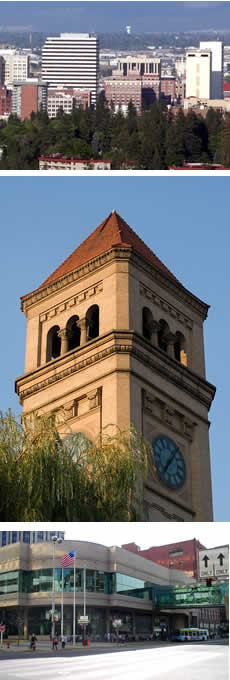WASHINGTON PEOPLE SEARCH!
- ✔ Contact Info
- ✔ Phone Numbers
- ✔ Criminal Records
- ✔ Income Info
- ✔ Neighbors
- ✔ People's Age
- ✔ Property Ownership
- ✔ And Much More
Spokane, Washington
Spokane is located in the east-central part and is the second largest city in the U.S. State of Washington. The Lilac City. Spokane, a Native American word meaning children of the Sun, is the largest city between Seattle and Minneapolis and is one of the most productive mining districts in North America. The city's economy also includes other industries like high-tech and biotech sectors.
At the River Park Square, you will find popular stores and a three-story movie theater. Spokane is a golfer's paradise and in the winter it is a mecca for outdoor enthusiasts with four major ski areas.
To See And To Do In Spokane
- Northwest Museum of Arts and Culture
- River Park Square
- Huckleberry's Natural Market
- Duncan Garden at Manito Park
- Downtown
- Broadview Dairy Museum, Caterina Winery
- Spokane County Courthouse
- The Patsy Clark Mansion
- The Knitting Factory
- Monroe Street Bridge
- Riverfront Park
- Riverside State Park
- Manito Park
History Of Spokane - Timeline
In 1810, The first white settlers in Spokane was Finan McDonald and Jacques Raphael "Jaco" Finlay. They built a trading post they named the Spokane House. In 1811, the Canadian explorer, geographer, and fur trader, David Thompson, traveled in the area and he wrote about the landscape in his journals.
In 1812, Fort Spokane, a rival trading post to the Spokane House, was built. It was another trading post and was built by the fur company John Jacob Astor's Pacific Fur Company. In 1858, U.S. Army soldiers defeated Native Americans at the Battle of Spokane Plains. In 1871, J.J. Downing and his family built a cabin and a sawmill and founded Spokane.
In 1872, the first post office opened. In 1873, a sawmill was built and James N. Glover built a store. In 1876, Frederick Post built a flour mill where the Washinton Water Power Building now stands. In 1878, William C. Gray and his wife built a hotel. In 1881, the city was incorporated and the first train arrived.
In 1884, a fire department was established. 1886, the daily newspaper, The Chronicle, was published. In 1887, the Gonzaga College opened. In 1888, the first horse-drawn streetcar was in traffic. In 1889, a fire destroyed downtown. In 1890, nearly 20,000 people lived in the city. In 1891, Spokane became the official city name. In 1893, telephones were working in the city.
In, 1906, the three-year-old boy, Bing Crosby, and his family moved to Spokane. In 1922, KHQ, the first commercial radio station in Spokane started its broadcast. In 1929, the first airmail flight in Spokane. In 1943, the Army Air Depot started at Geiger Field. Nearly 18.000 people worked there during the World War 2.
In 1946, nine members of the Spokane Indians baseball team died and six were injured when the bus that carried the team crashed. In 1951, the grave of Jacques Raphael "Jaco" Finlay, the first white settler in Spokane, was located by the archeology student Ray Carlson. In 1960, there were 181,608 people living in the city.
In 1974, the River Park Square shopping mall opened and Spokane was/is the smallest city ever to host a World's Fair. In 1993, the multi-purpose arena, the Spokane Veterans Memorial Arena, opened.

